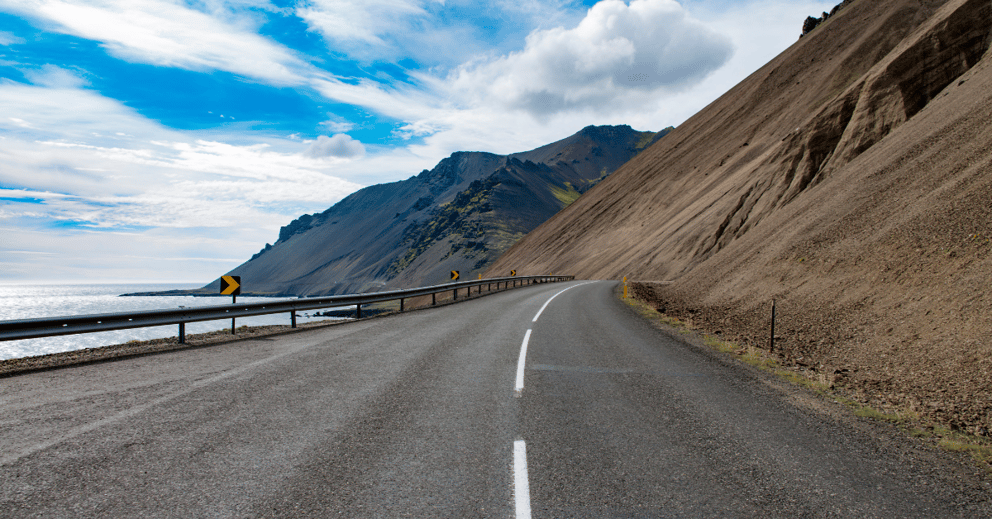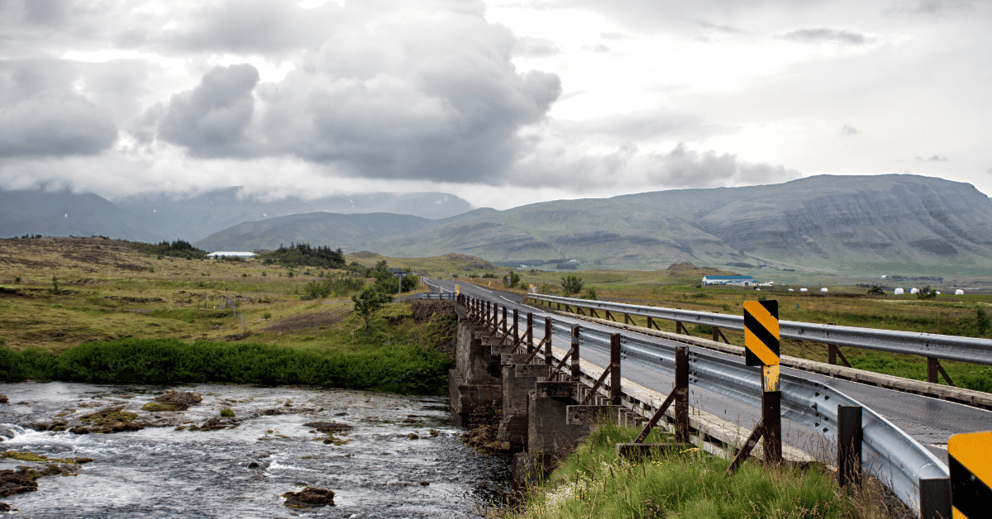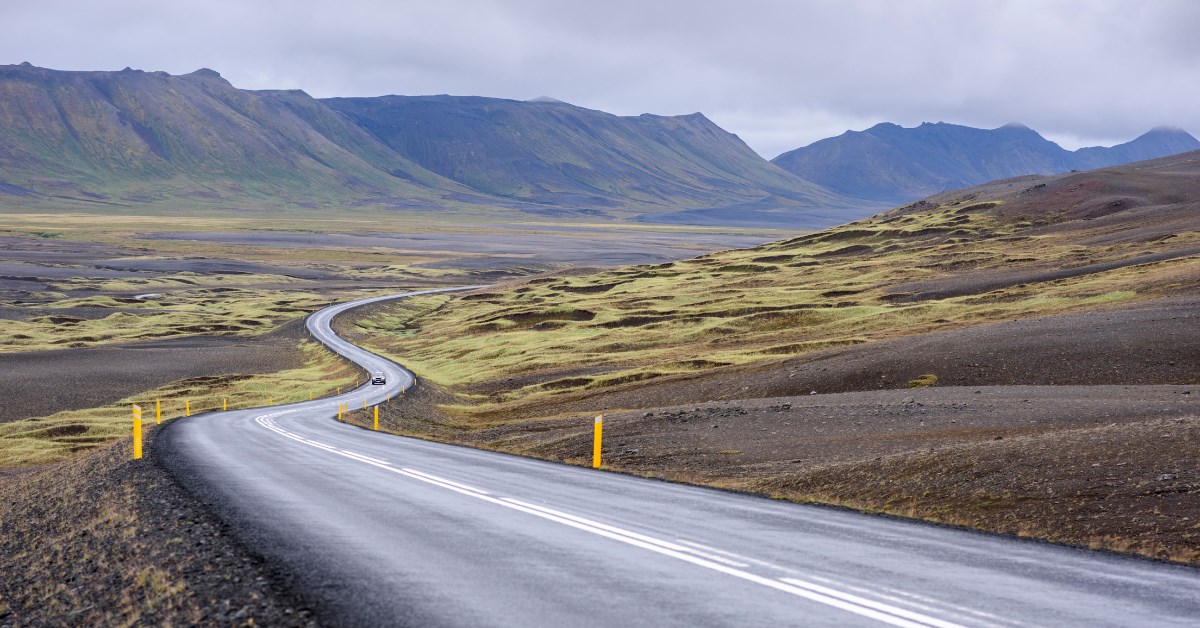How Long Does it Take to Drive Around Iceland?
All You Need to Know About Driving Around Iceland
There are so many ways to explore all that Iceland has to offer. One of the best ways to see everything on your list at your own pace, even the more off-the-beaten-track destinations, is to do it yourself. After all, who wouldn’t love driving around Iceland, taking in the local culture, exploring hidden gems, and experiencing the island in a way few tourists really get to?
Hiring a car and driving Iceland’s best-known road trip, the Ring Road, is a fantastic experience, one we think is an absolute must. But it’s not as easy as turning up and heading off! First off, you’ll need to know how long it’ll take you, from start to finish, to see all the best Icelandic views.
Driving Around Iceland FAQs
You’ll probably also have a lot of other questions about driving all around Iceland, so we’ve thought ahead and put together several of our most commonly asked questions from visitors looking to tackle the whole island!
How Big is Iceland?
Iceland is a fairly small island, only slightly bigger in area than Ireland, with an area of 102,772 square kilometers. From east to west, the country measures around 1,120 km (696 mi) wide, and about 720 km (447 mi) from north to south. But even in such a small country, there is absolutely no shortage of things to see and places to explore

How Long is Iceland’s Ring Road?
In total, the Ring Road is 1,332 km long (828 miles). The road snakes around the perimeter of Iceland in a rough circular shape, crossing through many Icelandic towns and cities and making it possible for visitors to tick countless natural attractions off their bucket lists.
If you want to get off the Ring Road and explore more wild depths of Iceland, you can opt for some truly beautiful and isolated routes. In the centre of Iceland, mainly towards the southwest, you will find the Highlands. This area is filled with F roads, which are mostly impassable in winter and even in summer require a 4x4 vehicle to access.
How Long Does it Take to Drive the Ring Road?
If you were to drive straight through, it would take you 16-20 hours to drive all around Iceland on the Ring Road. But who wants to do that when there’s so much to explore along the way? There are plenty of factors that influence your time on the road in Iceland that you’ll need to be aware of. Some of these variables are under your control, and some are up to nature. These include:
- Weather conditions
- Road conditions
- Time spent in Iceland’s towns and cities
- Must-see locations
To truly appreciate all the biggest and best stops around the Ring Road, we suggest taking 5 to 7 days to drive around Iceland. This again could change depending on how comprehensive you’d like your visit to be, the season you’re visiting in, and more.

When is the Best Time to Drive Around Iceland?
It’s a well-known fact that there is plenty to do in Iceland all year round. Whether you want to explore the country 24 hours a day during summer’s midnight sun or you’d prefer to join the hunt for the elusive northern lights, Iceland’s Route 1 awaits you.
In Iceland’s winter, daylight hours drop significantly, which might put some drivers off. However, you might be tempted to increase your chances of seeing the Northern Lights on your journey. The weather in winter is also more unpredictable, meaning that some smaller roads might close and impede your planned adventures. Make sure you stay off of F Roads and continue to check the weather on your way during the winter months.
In summer, the weather is, on average, far better. During June, July and August, the roads in Iceland's Highlands, such as the F208, are also open. This allows incredible exploration opportunities if you want to get a little off-piste with your journey. While the midnight sun is incredible, be warned to keep an eye on the time so as not to tire yourself on the road and get into trouble. At the end of your day, it’s your task to decide the best time to drive around Iceland, depending on what it is you want to experience.
What are the Driving Conditions Like?
The vast majority of the Ring Road is simple to drive. The size of the country and length of the road mean you’ll rarely be caught up in traffic outside of built-up areas, and the road surface is quality tarmac. There are two lanes most of the time, but some bridges are single-lane passageways and will require one car to give way if two cars reach the bridge area at the same time. It’s also worth considering that gravel roads are not uncommon. During winter, there are higher chances of flooding and ice on the roads, so it's vital to continuously check weather forecasts while travelling.
Another consideration of Iceland’s roads, particularly in summer, is cattle. Farmers will allow their sheep to roam as far as they like during the summer months for grazing. In most places, there are no roadside barriers, and sheep have a tendency to dart in front of cars when nervous. Drivers in Iceland are required to alert the authorities should there be an accident involving a sheep so that farmers can accurately account for their livestock. For more information about driving in Iceland, our blog is a great source of information.
Ready to embark on your very own Icelandic driving adventure? Browse our car models and start planning your Ring Road itinerary today.
Our other blogs provide plenty more information about the Ring Road, including how long it takes to drive around Iceland.

